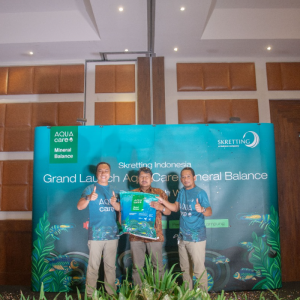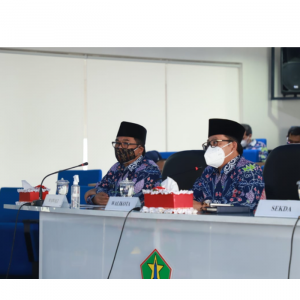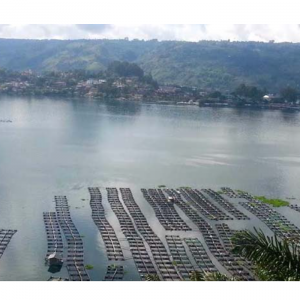
Macronutrient Research in Aquaculture Nutrition
| Fri, 12 Feb 2021 - 11:47
Globally, the aquaculture industry supplies 17.1 percent of the total animal protein for human consumption, with an estimated value of over (U.S.) $250 billion. Aquafeeds play a crucial role in ensuring this level of production, and the global aquafeed industry produced 44.4 million metric tons in 2017, valued at over $140 billion (Food and Agriculture Organization of the United Nations, FAO; SOFIA 2020).
Most efforts on aquaculture nutrition research have been directed towards proteins, then lipids and carbohydrates (CHO). Protein provides amino acids, the building blocks of tissue, and is directly related to animal growth. Regardless of the species, trophic level, or culture environments, most aquatic species have a higher requirement for protein compared to terrestrial livestock species (poultry, swine and ruminants).
Noteworthy, although aquatic species have higher protein requirements, their energy expenditure is much lower as they do not regulate their body temperature and inhabit an environment where the cost of movement is energetically lower. Due to these higher requirements, protein rich ingredients are added at high levels, typically ranging from 30 to 55 percent and consequently are the most expensive component of the diet. Lipids are next, and CHO are the lowest cost of these three ingredients on a volume basis. Although they make up a much smaller component of aquafeed, non-protein macro-nutrients are essential for growth, and their importance in different fish species may vary, requiring research to determine their optimal inclusion levels.
Also read: Influence Of Diet Type on Gut Microbiome, Nutrient Assimilation in GIFT Tilapia
Research related to lipid nutrition has been increasing in the last decades. Lipids are a highly dense energy source, containing twice the energy content of other macronutrients. These molecules also participate in several essential physiological processes, as cell membrane structuring, hormonal steroid synthesis, and adequate immune system functioning. Protein-sparing effects [process used by the body to obtain energy from sources other than protein, including glycogen stores, fatty tissues and dietary fats] driven by dietary lipid content are reported for most fish species. Furthermore, some research has sought to achieve high-energy diet formulations by maximizing dietary lipid content without impairing fish performance and welfare. Several studies have reported on the importance of an adequate dietary ratio of macronutrients to improve performance and cost-effectiveness of formulations.
Compared to protein and lipids, CHO is the least investigated macronutrient in the nutrition of aquacultured species. One reason could be the limited capacity of most fish and crustacean species to digest CHO and/or utilize glucose as a source of energy. Nevertheless, their inclusion in aquafeeds remains critical, particularly for herbivorous and omnivorous species, because they are an inexpensive and efficient energy source for species with low commercial value. In addition, the functional properties of CHO ingredients are essential in feed extrusion to manufacture robust, expanded and water-stable pellets.
Beyond the effect of a specific macronutrient in fish production performance, it is crucial to study their interactions, as all ingredients play a part in feed formulation, muscle accretion, health and fillet quality. Accordingly, this article evaluates research efforts carried out between 1990 and 2020 for protein, lipid and CHO in aquaculture nutrition at a broad level, including the degree of emphasis placed on species with different physiology and ecology, as well as the commercial drivers affecting the focus of research.
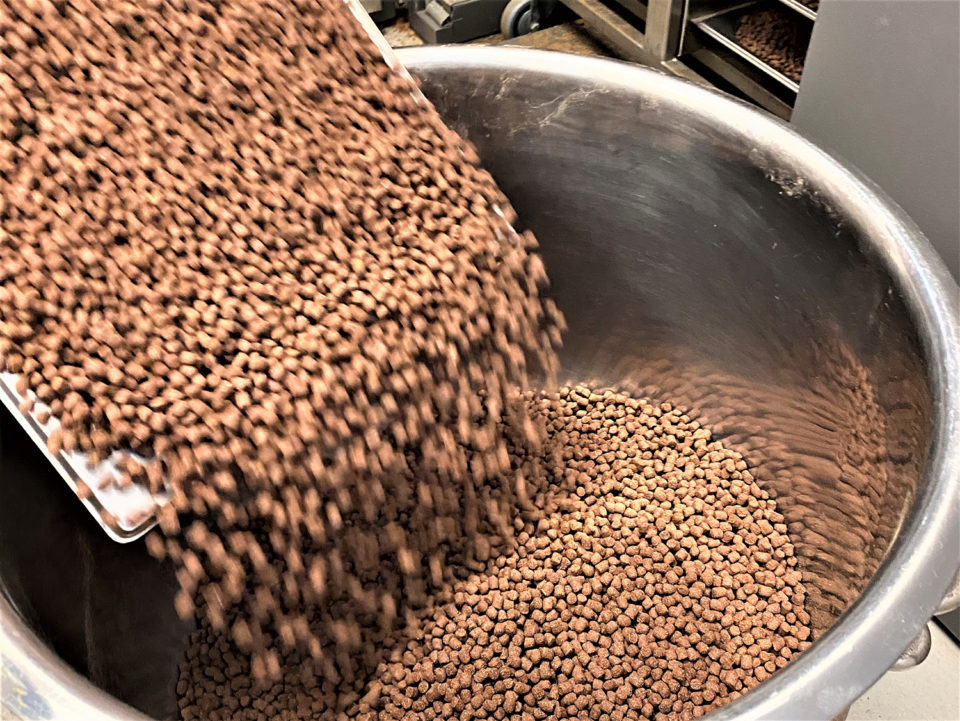
Considerable research efforts have reported on the importance of an adequate dietary ratio of macro-nutrients to improve performance and cost-effectiveness of aquafeed formulations.
Study setup
A systematic and comprehensive literature search in Scopus [the largest abstract and citation database of peer-reviewed literature, including scientific journals, books and conference proceedings] was carried out for protein, lipids and carbohydrates using three keywords: aquaculture, diet and protein/lipid/carbohydrate. The search criteria were as follows: containing “aquaculture” (throughout the manuscript), AND “diet” (title, abstract, or keywords), AND “protein or lipid or carbohydrate” (title, abstract or keywords). In other words, all papers contained aquaculture, diet and protein/lipid/carbohydrate at least one time in their texts.
The next step in the search was to limit subject area to “Agricultural and Biological Sciences”; language to English; and timespan to 1990-2020. According to the Scopus categorization, the category of “aquatic science” belongs in “agricultural and biological sciences.”
Scopus found 10,852 and 6,098, and 1,363 articles related to protein, lipid and CHO respectively, from aquaculture literature. A total of 807 papers contained all three macro-ingredients in a single trial, which did not necessarily mean all three macronutrients were investigated in the same experiment. For example, most papers were found to only investigate the effect of a single dietary macronutrient on the nutrient utilization of all macronutrients. Due to the large number of articles, it was not possible to separate all relevant papers; consequently, papers containing all three macro-ingredients in a single trial were not considered in this study. Data were visualized using a commercial program (GraphPad Prism® version 7, GraphPad Software Inc., San Diego, Calif., USA).
Also read: New Method Documents Feed Nutrient Utilization
The following marine, anadromous [migrating from saltwater to spawn in freshwater] and freshwater fish species were searched for:
Sea breams: black sea bream, gilthead sea bream, red sea bream, yellowfin sea bream, Sobaity sea bream, blackspot sea bream, sharp snout sea bream, zebra sea bream, white sea bream, and striped sea bream.
Sea basses: Asian sea bass, European sea bass, Japanese sea bass, spotted sea bass, white sea bass, black sea bass.
Yellowtails: kingfish, longfin yellowtail, Mediterranean yellowtail, California yellowtail.
Pompanos: Florida pompano, golden pompano, silver pompano, Plata pompano.
Croakers: yellow croaker, Chu’s croaker, giant croaker and Atlantic croaker.
Drums: red drum, Shi drum, cuneate drum.
Flounders: olive flounder, Brazilian flounder, southern flounder, starry flounder, summer flounder, Cortez flounder, winter flounder, yellowtail flounder.
Groupers: pearl gentian grouper, orange-spotted grouper, leopard coral grouper, giant grouper, humpback grouper, kelp grouper, brown-marbled grouper, red-spotted grouper, white grouper, Hong Kong grouper, polka-dot grouper, greasy grouper, Nassau grouper.
Salmons: Atlantic salmon and chinook salmon.
Catfishes: sutchi catfish, silver catfish, yellow catfish, channel catfish, African catfish, Ussuri catfish, Indian butter catfish, hybrid catfish, freshwater catfish, striped catfish, stinging catfish, Sangkuriang catfish, Asian red-tailed catfish, river catfish, neotropical catfish, Amazonian pimelodid catfish, South American catfish, Mekong giant catfish, Amur catfish, European catfish, dark barbel catfish, Bocourti’s catfish, silver grey catfish, wels catfish, tra catfish, bagrid catfish, pangasius catfish, Chinese long-snout catfish, common catfish, jundiá catfish, pacamã catfish, blue catfish, eastern catfish, cachara catfish, shovelnose catfish, long-whiskered catfish, surubim catfish, walking catfish, Australian catfish, clariid catfish, Indian catfish, Chinese catfish.
Other finfish species: Atlantic cod, cobia and turbot.
Also read: Marine Ingredients Are Stable in Volume, Strategic in Aquaculture Nutrition
The following invertebrate species were searched for:
Freshwater prawns: oriental river prawn, river prawn, Amazon river prawn, monsoon river prawn.
Marine decapods: Baltic prawn, Kuruma prawn, Chinese prawn, whiteleg shrimp, black tiger shrimp, mud crab, horseshoe crab, spider crab, spiny lobster, European lobster, American lobster, Norway lobster, slipper lobster.
Crabs: mitten crab, mud crab, sesarmid crab, swimming crab, horseshoe crab, spider crab.
Crayfishes: spiny lobster, European lobster, American lobster, Norway lobster, slipper lobster, red swamp crayfish, crayfish marron, narrow clawed crayfish, Procambarus acanthophorus, noble crayfish, Southern Chilean freshwater crayfish, Australian red claw crayfish, signal crayfish, Procambarus llamasi, Australian freshwater crayfish.
The articles obtained from each of these searches were categorized by macronutrient (protein, lipid or CHO), species, publishing country, publishing journal and trophic level of species investigated and were organized in column graphs for visual interpretation.
Results
Of the research publications identified in our search, most peer-reviewed studies were conducted in the United States and China, followed by Spain, Norway and Australia. In terms of journals and aquatic species, specialized scientific journals such as Aquaculture, Aquaculture Nutrition and Aquaculture Research were the most targeted, and the salmonids and marine finfish were the species most studied.
Regarding publications per macronutrient, as expected, the number of peer-reviewed published papers from 1990 to 2020 investigating proteins was higher than lipids and carbohydrates in most countries, as shown in Fig. 1. Fig. 2 presents the number of peer-reviewed articles published from 1990 to 2020 and related to protein, lipid and carbohydrate by trophic levels, as well as the trophic levels [position of organisms in a food web] of top aquacultured species.
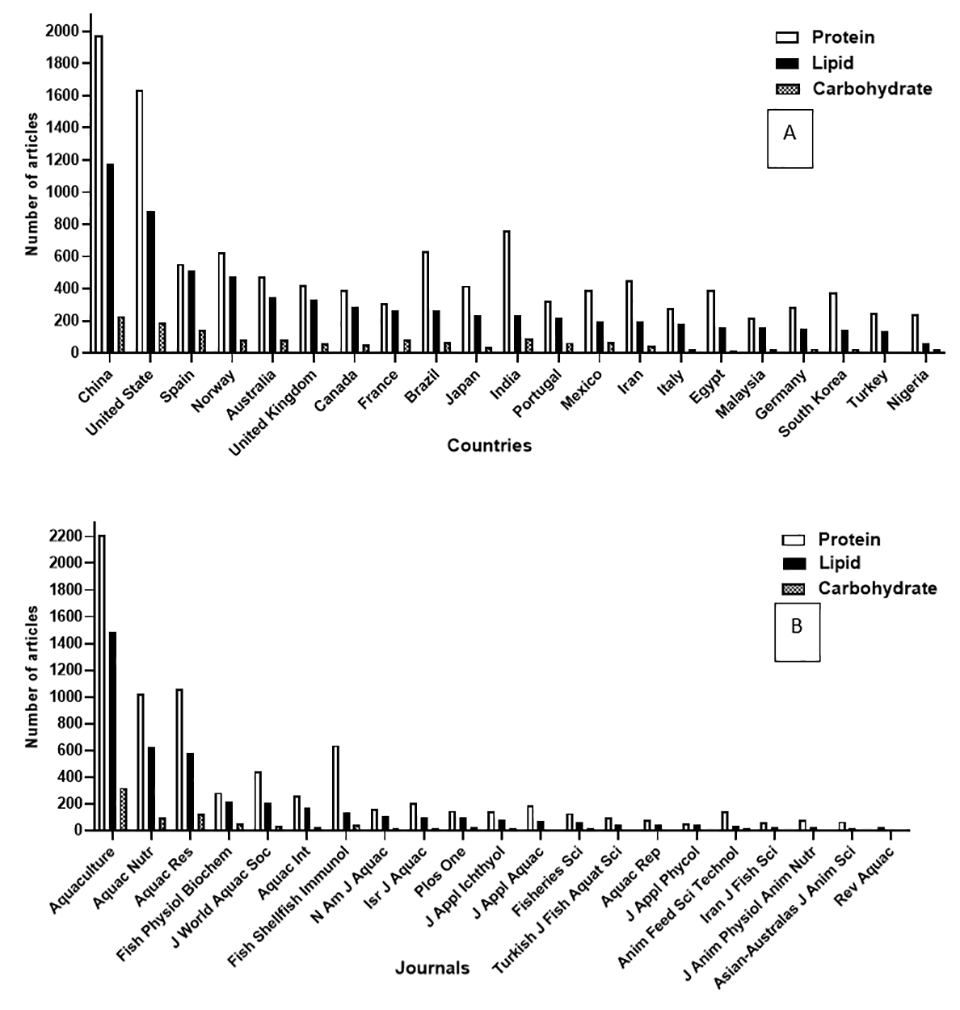
Fig. 1: Number of published, peer-reviewed articles by countries (A) or by journals (B) since 1990 and related to protein, lipid and carbohydrate research on the top produced species according in 2018, according to FAO 2020.

Fig. 2: A The number of peer-reviewed published articles from 1990 to 2020 related to protein, lipid, and carbohydrate by trophic levels (high = 4-5, medium = 3-4, low = 2-3); and B. trophic levels of top species. Source: FishBase (http://www.fishbase.org/search.php).
Top culture species based on volume, included tilapia, carps, rainbow trout, catfishes, whiteleg shrimp, black tiger shrimp and crayfish. More specifically, the total number of papers for top finfish species related to protein, lipid, and CHO were 5594, 3020 and 609, while for crustacean species were 973, 469, and 122, respectively. In marine fish and cold-water species, the difference between lipid and protein research is reduced, but protein was still the priority (Fig. 3). Interestingly in salmons (Atlantic and chinook), the number of articles related to lipid and protein were similar.
The total number of articles in carps closely reflects their market needs and production. Among the top six species, grass carp, common carp, and crucian carp were the three most produced species in China. Similarly, the Indian major carp species – catla (Catla catla), rohu (Labeo rohita) and mrigal (Cirrhinus cirrhosus) – are the most researched South Asia species, especially in India. Although there is a large number of research studies on silver carp and bighead carp in China, nutritional reports are still limited because of their filter-feeding habits (extracting supplemental nutrition from the environment) and lower market value. Carps are mostly herbivores; thus, the number of CHO articles is the second highest for carps, where the highest number of CHO articles was in marine fish, and substantially higher than that of any other species.
The number of articles for protein vs. lipid vs. CHO followed the same trend discussed previously. Additionally, there was a wide range of topics related to protein and lipids, such as their source, optimal dietary inclusion and replacement of fishmeal or fish oil. These factors contribute to the differences in the article numbers reported in carps for the three macronutrients.
Also read: Fish nutrition Will Fuel Aquaculture’s Future
Discussion
Protein and lipids, or more specifically amino acids and fatty acids, respectively, are both required by fish and crustaceans for optimal growth and development, in contrast to CHO, and its simpler sugars. High-protein diets are costly and generate strong commercial interest in reducing dietary cost through protein R&D. Although some essential lipid sources can also be expensive, most lipid sources are used as an affordable digestible energy source and make up a small fraction of the diet (1 to 8 percent) for most farmed species, except for salmonids and carnivorous marine fish. For these latter species, the industry is ever more reliant on high energy diets containing increasing inclusions of cost-effective digestible lipids.
The large number of protein studies obtained from fish and shrimp research may also reflect the diversity of protein sources and amino acids supplements. In contrast, there are fewer commercially available sources of digestible energy and essential fatty acids for aquatic species. In this sense, the lack of diversity could be one explanation that tends to drive fewer R&D efforts into lipids and CHO. Also, many marine meals classified as protein sources have the added benefit of providing a crucial residual lipid fraction (10 to 15 percent) which contains sufficient omega-3 long-chain polyunsaturated fatty acids (LC-PUFA) for many fish species, and cholesterol for crustaceans.
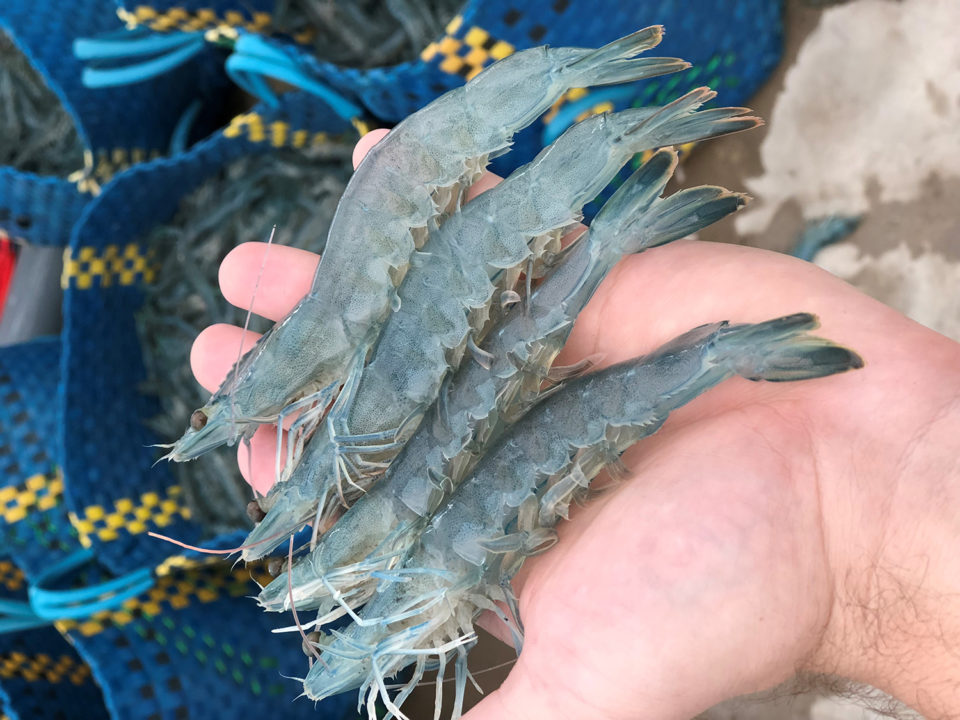
Protein requirements have been evaluated for many fish and shrimp species, but the nutritional value of all protein ingredients is not well established, particularly for novel protein ingredients.
Optimizing the protein-sparing effect by supplying lipids and CHO as non-protein energy is key to making diets more cost-effective and environmentally friendly (excess amino acids are excreted as ammonia leading to low water quality and eutrophication). Moreover, lipids are accepted at higher inclusion rates in carnivorous fish diets (20 to 40 percent for salmon) than omnivorous species or crustacean (4 to 15 percent), which tend to derive more energy from CHO sources than from lipids. The latter also have less capacity to metabolize and store fat in fillets.
According to recent studies, lipids from terrestrial plants and rendered animal by-products are a cheap source of digestible energy, resulting in cost-effective and sustainable formulation to satisfy animal energy demands. While specific lipid sources such as omega-3 LC-PUFA, phospholipids, and cholesterol are required to a variable extent in different life stages of finfish, for crustaceans this is essential. Therefore, most research has investigated the possibilities to provide terrestrial alternatives as a source of energy and spare those essential lipid sources (particularly omega-3 LC-PUFA). Traditional sources of essential lipids have typically originated from marine-derived resources such as fish, squid and krill oils and residual lipid fractions in their respective meals. Novel sources from marine algae (e.g., Thraustochytrids, Aurantiochytrium and Schizochytrium) and genetically modified, DHA-rich canola already are commercially available. These will be increasingly used in years to come.
The overlooked CHO component of aquafeeds provides the opportunity to further explore the non-protein related characteristics of various ingredients, including their potential immunostimulant and functional properties. Another prospective area of research involves a better understanding of the mycotoxins content in CHO-based ingredients for the major aquatic cultured species. In this sense, these recent and growing lipid- and CHO-related topics may contribute to more evenly distributed, future research efforts among protein, lipid and CHO.
Baca juga: Nutrition for Aquatic Animals and Related Problems
Although protein requirements have been examined for many fish and shrimp species, the nutritional value of protein ingredients is not established, particularly for novel protein ingredients. While necessary to an extent, dietary protein catabolism [metabolic pathway to break down molecules for their use by the body] is an inefficient and costly source of energy compared to lipids or CHO. Due to the complexity surrounding the “black-box” of protein metabolism in living organisms, an ingredient’s nutritional value is challenging to determine and often species-specific. Significant research efforts have been directed towards balancing the cost of an ingredient and the efficiency of protein conversion.
Interestingly, nutrition research is often focused on a single macronutrient for rigorous assessment and to simplify the experimental design. Balancing the levels of all three digestible macronutrients can lead to nutritional improvements beyond the effect of a single nutrient. Due to the diversity, cost and volume of protein sources, potentially there is more opportunity and research funding to conduct proper research on protein. The focus towards replacing fishmeal as a finite resource has generated a flurry of R&D activities in the space of novel protein alternatives, initially plant and animal-byproduct sources and now increasingly from microbial, microalgal and insect protein sources.
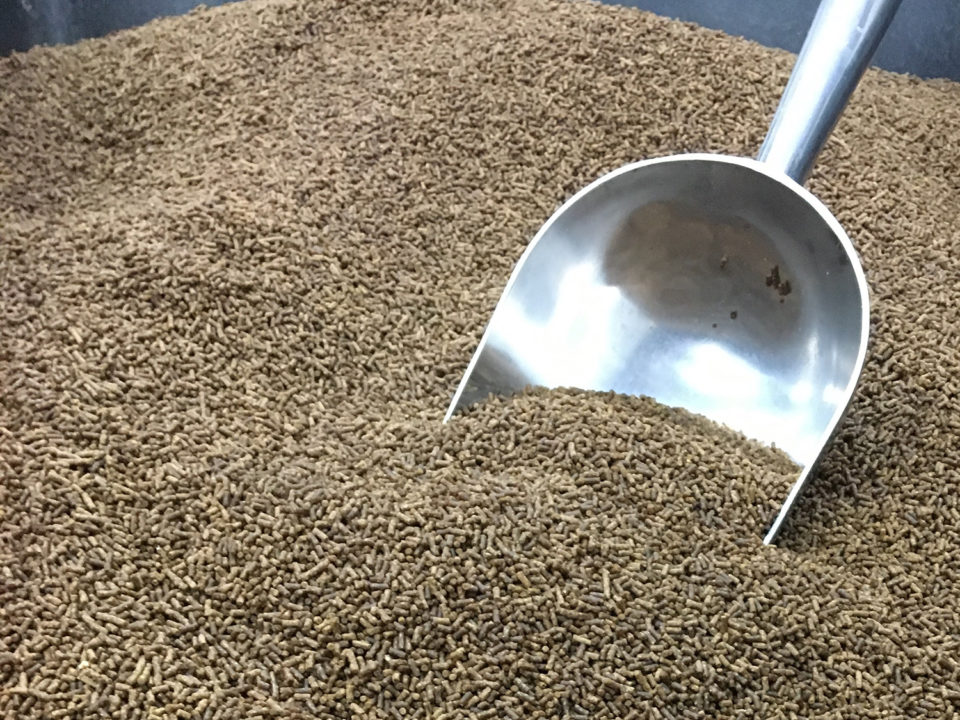
It is important to equally consider the three macronutrients (protein, lipid, carbohydrate) in formulations, as each will influence animal performance and feed conversion efficiency.
The broad diversity of aquaculture species (over 600 species) makes the nutritional studies on protein requirements particularly essential and challenging. Protein research likely will continue to play a major role in optimizing growth performance, with lipid research focusing on achieving cost-effectiveness, health and improved product quality (levels of omega-3 LC-PUFA), and CHO research centered around least-cost feed formulations, aquafeed manufacturing and water stability.
Perspectives
Considering the volume of major aquacultured species produced (carps 31.5 percent; tilapia 13.2 percent; and other species such as catfish, marine shrimp, marine fish species and salmon representing 37.6 percent of the global volume) – per data from the Food and Agriculture Organization of the United Nations (FAO 2019) – lipids and CHO-based ingredients are worth at least half of the global aquafeed production costs. These macronutrients represent an essential economic component, not only for the feed mills but for the entire aquaculture industry.
Future research focused on improving not only animal productivity – but also cost-efficiency, health and environmental impacts – will need to shift focus from protein-rich sources and increasingly consider the role of lipids and carbohydrates (CHO) in future formulations.
Source: Global Aquaculture Alliance













